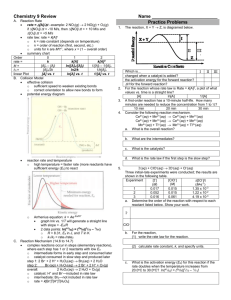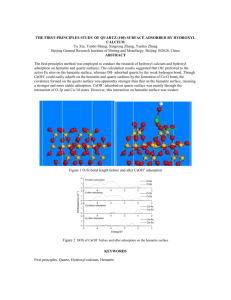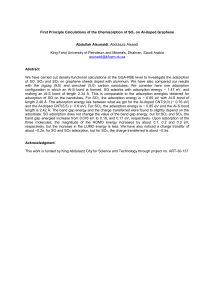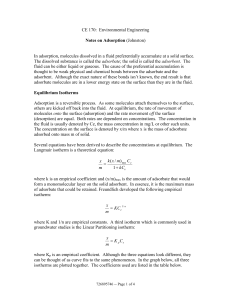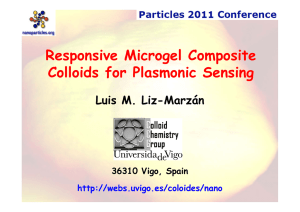Part A. Scanning Electron Microscopy (SEM) images of synthetic Fe
advertisement
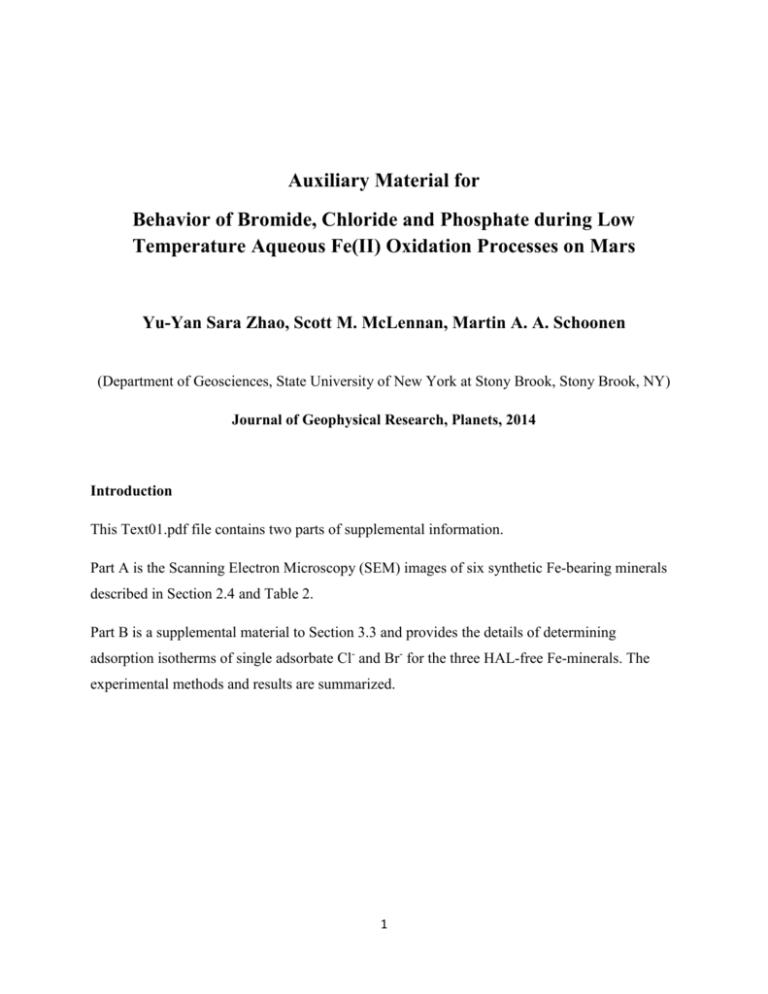
Auxiliary Material for Behavior of Bromide, Chloride and Phosphate during Low Temperature Aqueous Fe(II) Oxidation Processes on Mars Yu-Yan Sara Zhao, Scott M. McLennan, Martin A. A. Schoonen (Department of Geosciences, State University of New York at Stony Brook, Stony Brook, NY) Journal of Geophysical Research, Planets, 2014 Introduction This Text01.pdf file contains two parts of supplemental information. Part A is the Scanning Electron Microscopy (SEM) images of six synthetic Fe-bearing minerals described in Section 2.4 and Table 2. Part B is a supplemental material to Section 3.3 and provides the details of determining adsorption isotherms of single adsorbate Cl- and Br- for the three HAL-free Fe-minerals. The experimental methods and results are summarized. 1 Part A. Scanning Electron Microscopy (SEM) images of synthetic Fe-bearing minerals. Figure S1. SEM images of synthetic Fe-bearing minerals described in Section 2.4 and Table 2. Elements detected by Energy-Dispersive X-ray Spectrometer (EDS; insets in SEM images) were consistent with the X-ray fluorescence spectrometry (XRF) analyses. The Au detected in goethite and hematite samples was introduced by the gold-coating pretreatment prior to the SEM analysis. In jarosite samples, the Au peak overlaps a S peak. (A) HAL-free jarosite. (B) Cl-jarosite. (C) Br-jarosite. (D) Br,Cl-jarosite. (E) HAL-free goethite. (F) HAL-free hematite. 2 Part B. Adsorption isotherms of Cl- and Br- for HAL-free -hematite, -goethite, and -jarosite In the preliminary adsorption experiments, adsorption isotherms of single adsorbate Cl- and Br- of the three Fe-minerals were determined before making multi-adsorbate solutions of Cl-, Br-, SO42- and H2PO4- (results that are discussed in Section 3.3). Here, the experimental methods and results of determining adsorption isotherms are summarized. Experimental methods: NaCl and NaBr adsorbate solutions (unbuffered) were prepared at concentrations of 0.5, 1, 1.5, 2, 3, 5, 7 and 10 mM. In each experiment, 25 mL of adsorbate solution were transferred to a 50 mL centrifuge tube and then 1 mL of mineral slurry (0.1 g/mL; unbuffered) was added to the tube. These tubes were then capped and put in a water bath maintained at 25 ºC for 3 days for the reactions to reach equilibrium (based on previous kinetic studies dealing with similar systems [e.g., Chitrakar et al., 2006; Gao, 2001]). During the reaction period, the tubes were agitated by hand every 24 h. At the end of each experiment, all the tubes were centrifuged and the supernatant solutions were collected and passed through 0.2 µm filters. The pH of each solution was measured immediately after sampling. Results: The adsorption isotherms of Cl- and Br- (from NaCl or NaBr solution) on HAL-free hematite, -goethite, and -jarosite are shown in Figure S2. Similar trends of uptake of Cl- or Br(in the range of 0~10 mM) were observed on all three HAL-free minerals. Uptake of Br- on the mineral surface increased with increasing equilibrium concentrations of Br-. On the other hand, sorbed Cl- scattered in a narrow range with increasing equilibrium concentrations, and was much lower than sorbed Br-. 3 The isotherm data were modeled using Freundlich and Langmuir equations. Cl- data were poorly fit by either Freundlich or Langmuir models (R2 ranged from 0.55 to 0.83). On the other hand, adsorption isotherms of Br- were better fitted with the Freundlich equation x/m = KCn, where (x/m) is the amount of bromide adsorbed on the solid phase (mg Br/g), C is the equilibrium bromide concentration in the solution phase (mg Br/kg), and K (mg/g) and n (dimensionless) are Freundlich constants. The constant n refers to the interaction between exchange sites in the adsorbent and Br- ions. A high value for n (> 1) indicates favorable adsorption [e.g., Chitrakar et al., 2006]. Uptake of Br- on goethite is considerably higher than that on hematite or jarosite. Freundlich isotherm constants and R2 values of isotherms of bromide on all three HAL-free minerals are given in Table S1. Table S1. Freundlich isotherm constants of Br- calculated for HAL-free -hematite, -goethite and -jarosite HAL-free minerals Hematite Goethite Jarosite Solution NaBr NaBr NaBr Freundlich constants K n 13.7 1.3 985 2.2 3.94 1.0 logK 1.14 2.99 0.595 R2 0.989 0.984 0.984 * HAL-free = halogen-free. References: Chitrakar, R., S. Tezuka, A. Sonoda, K. Sakane, K. Ooi, and T. Hirotsu (2006), Phosphate adsorption on synthetic goethite and akaganeite, J. Colloid Interface Sci., 298, 602-608. Gao, Y. (2001), Surface electrical properties of goethite and adsorption of phosphate and arsenate on iron oxyhydroxides in high ionic strength solutions, Ph.D thesis, Dept. of Earth and Planet. Sci., McGill University, Montreal, Canada. 4 Figure S2. Figure S2. Adsorption isotherms of Cl- and Br- with (A) HAL-free hematite, (B) HAL-free goethite, and (C) HAL-free jarosite. The initial absorbate solutions were unbuffered. Sorbed Cl- scattered over a narrow range whereas sorbed Br- increased with increasing equilibrium concentrations. 5


